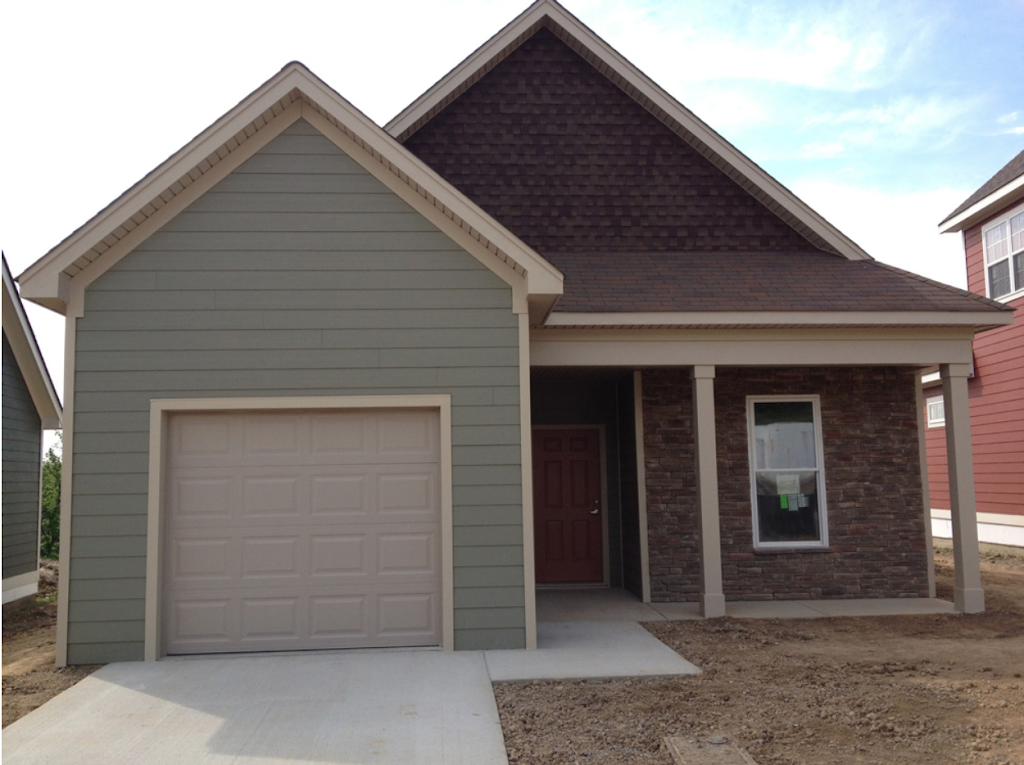
Low Cost House Construction with Energy-Efficient Insulated Concrete Forms (ICF)

The need for new low cost house construction in the United States (U.S.) has reached a critical level due to a shortage of affordable housing. Low-cost housing must provide reasonable rents and manageable monthly expenses. A building solution to low-cost housing with affordable utility bills are insulated concrete forms (ICFs), like Fox Blocks. Fox Blocks ICFs create energy-efficient, low-maintenance and durable housing, which fosters fair rents and low utility bills.

Affordable, Low-Cost Housing Shortage in the U.S.
A shortage of available low-cost housing in the U.S. is driving up rents. The National Low-Income Housing Coalition (NLIHC) reports that in the U.S. there are 35 available and affordable rental homes for every 100 low-income renter households (people with income at or below 80 percent of regions median income). The impacts of increasing low-income rents are often devastating. It slows the ability of families to accumulate funds for a mortgage down payment, makes some choose between food and medicine, and can even lead to evictions and homelessness for others.
The Need for Energy-Efficient Low Cost House Construction
Low-income households often struggle with utility costs. A recent report found that low-income households spend 7.2 percent of their household income on utilities. Low-income households pay more than twice the percentage of their household income on utilities as median-income households and three times as much as higher-income households. The report concluded that if low-income housing had the same efficiency level as the average U.S. home, it would decrease energy costs for low-income housing by 35 percent.
The challenge to contractors and architects of low-cost housing is to construct living spaces with affordable rents and utilities. Providing low rent and energy-efficient housing is vital to closing the gap between low-income and median-income households.
Energy-Efficient and Durable Low-Cost Housing Requires a Tight Building Envelope
Builders and architects of low-cost housing must consider energy-efficiency and durability. Energy-efficient housing lowers the tenant’s monthly bills. Durability will lessen long-term repair and maintenance expenses; costs that are often passed on to the tenants. Critical elements of energy-efficient, durable, and low-cost housing is a tight building envelope, and the location of the site, windows, rooms, and ductwork.
A tight building envelope is vital to controlling utility costs and creating good indoor environmental quality (IEQ) for low-cost housing. A tight building envelope needs both continuous insulation (CI) and an air and moisture barrier. In combination, the CI and an air and moisture barrier control heat gains and losses and moisture infiltration. Managing heat gains and losses will lessen energy use and save money. Moisture resistance is vital to preventing mold, which can diminish the IEQ and integrity of a home.
ICF Wall Construction for Low-Cost Housing

The walls for low-cost housing are essential to producing a tight building envelope. Vital components of energy-efficient walls include low-thermal-conductivity, high effective R-value, and high thermal mass . Energy-efficient walls for low-cost housing are critical to achieving a tight building envelope.
An effective wall system for building energy-efficient and durable low-cost housing is insulated concrete form (ICF) walls. ICF walls form a tight building envelope that protects against air and moisture inflation.

ICFs are cast-in-place concrete walls, placed between two layers of insulation. To make ICF walls, expanded polystyrene foam panels or interlocking hollow extruded polystyrene foam are dry-stacked to a wall’s length. The forms are braced and reinforced. Trained professionals then place concrete into the hollow form panels.
Other than energy-efficiency and durability, there are several more benefits of ICF wall systems for low-cost housing:
- ICFs are disaster-, fire-, and pest-resistant
- ICFs are low-maintenance
- ICFs are noise-reducing and healthy
- ICF construction provides design flexibility
- ICFs are easy and quick to install, which saves time and money
Building Low-Cost Housing with Fox Blocks ICF

A superior product for building new low-cost housing is the Fox Blocks ICF. Fox Blocks provide CI with an R-value of 23+, which produces an airtight building envelope that is essential for an energy-efficient home. Fox Blocks also create a solid continuous monolithic concrete wall with a perm rating of less than 1.0. The low perm rating manages moisture intrusion and stops the growth of mold, which is both unhealthy and diminishes the integrity of the house.
Importantly, Fox Blocks reduces construction costs because it combines five construction steps into one, including structure, insulation, air barrier, vapor retarder, and furring attachment. This feature quickens the project delivery time by eliminating the need to coordinate various trades. Fox Blocks ICFs can help fill the gap in affordable housing by creating new energy-efficient, durable, and low-cost housing.